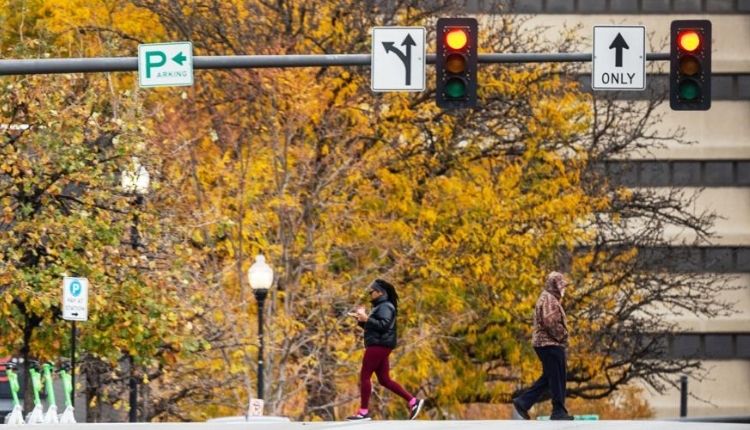Walking through Omaha should never feel like a life-or-death situation, yet speeding drivers make the streets dangerous for pedestrians every day. The faster a vehicle is moving, the less time a driver has to react, and the more severe the impact when a collision happens. These crashes often leave victims with devastating injuries or, tragically, take lives. Slowing down isn’t just about obeying the law—it’s about protecting the people who share the road.
Communities across Omaha are pushing for safer streets, but progress is often slow. In the meantime, families are left dealing with the consequences of preventable accidents. Understanding the connection between speed and pedestrian fatalities can help drive the changes the city desperately needs. When everyone prioritizes safety, Omaha can become a safer, more walkable city for everyone.
How Speed Increases the Severity of Crashes
Even small increases in speed can turn a minor collision into a fatal one. At 20 mph, pedestrians have a much higher chance of surviving an impact than at 40 mph. The physics are simple: faster speeds mean more force and less reaction time. Unfortunately, many drivers underestimate just how dangerous those extra miles per hour can be.
Slower streets save lives and create safer neighborhoods. Cities that have lowered speed limits in pedestrian-heavy areas have seen a significant drop in serious injuries and fatalities. Omaha could benefit from similar measures, particularly in residential and downtown areas. Safety should always outweigh convenience when lives are at stake.
High-Risk Areas in Omaha
Certain parts of Omaha are far more dangerous for pedestrians because of high traffic volumes and poor infrastructure. Some of the most concerning areas include:
- Busy intersections where high traffic and limited visibility create constant hazards.
- Streets without crosswalks that force pedestrians to cross unsafely.
- Neighborhoods with poor or no street lighting make it difficult for drivers to see walkers at night.
- Areas near schools or parks where children are more likely to be present but safety measures are lacking.
- High-speed corridors where drivers rarely slow down, even in pedestrian-heavy areas.
Community reports and accident data often highlight where improvements are needed most. By adding better signage, clearly marked crosswalks, and pedestrian signals, these areas can become safer for everyone. Residents can also collaborate with neighborhood associations to advocate for upgrades. A coordinated effort between citizens and city leaders is essential to creating safer streets.
The Role of Distracted and Aggressive Driving
Speeding often goes hand-in-hand with other dangerous behaviors, like texting while driving or aggressive lane changes. These actions make it even harder for drivers to see pedestrians or react in time. The result is often a collision that could have been avoided with more responsible driving. Reducing distractions and keeping emotions in check behind the wheel can prevent countless accidents.
When drivers stay alert and drive defensively, everyone benefits. Pedestrians feel safer crossing streets, and neighborhoods become more inviting for walking and biking. Creating awareness about these behaviors is critical to changing driving culture. Safer habits behind the wheel mean fewer tragedies on Omaha’s streets.
Holding Drivers Accountable
When speeding or reckless driving leads to a pedestrian accident, accountability is key. Victims and their families often face medical expenses, lost income, and emotional trauma that can last for years. Seeking legal support ensures that negligent drivers are held responsible for the harm they’ve caused. It also helps families secure the financial resources they need to rebuild their lives.
Working with experienced attorneys like Berry Law can make this process less overwhelming. They know how to investigate crashes, gather evidence, and fight for fair compensation. Having skilled representation also helps highlight systemic issues that contribute to unsafe streets. These cases can spark conversations that lead to meaningful change in Omaha’s traffic policies.
Infrastructure Improvements That Save Lives
Street design plays a huge role in preventing pedestrian fatalities. Narrower lanes, speed bumps, and well-marked crosswalks naturally slow traffic and improve visibility. Cities that have invested in these upgrades have seen measurable drops in accidents. Omaha has the opportunity to make similar improvements and protect its residents.
These changes don’t just improve safety—they also make neighborhoods more vibrant and walkable. Businesses benefit when people feel safe walking in their communities. Families can enjoy parks and public spaces without fear of speeding traffic. Investing in infrastructure is a win for everyone in the city.
The Need for Stronger Enforcement
Even the best infrastructure and speed limits won’t matter without proper enforcement. Drivers are less likely to slow down if they believe there are no consequences. Consistent traffic enforcement in school zones, residential streets, and high-pedestrian areas is critical. Visible patrols and automated speed cameras can make a powerful difference.
Stronger enforcement also sends a message that pedestrian safety is a community priority. When drivers know the city is serious about safety, they’re more likely to adjust their behavior. Omaha can look to other cities for proven strategies that balance safety and efficiency. Protecting lives must always come first.
Community Advocacy for Safer Streets
Lasting change often starts with community advocacy. Neighborhood groups, parents, and local organizations have the power to push for better safety measures. From petitioning for lower speed limits to demanding improved lighting, every voice matters in shaping safer streets. Collective action can be the catalyst for policy changes that save lives.
Building coalitions amplifies these efforts and keeps pressure on decision-makers. When residents, businesses, and schools unite for a common cause, it’s harder for leaders to ignore the call for safer streets. Change is possible when communities stand together. Omaha’s neighborhoods deserve nothing less than streets where everyone feels safe.
Creating a Safer Future for Omaha
Making Omaha safer for pedestrians isn’t just about preventing accidents—it’s about building a better quality of life for everyone. Slower streets and safer crossings encourage walking, biking, and community interaction. They make neighborhoods more welcoming and connected. Everyone benefits when safety is prioritized.
By committing to safer driving habits and supporting infrastructure changes, residents can help create a city where pedestrian fatalities are a thing of the past. It takes effort from drivers, lawmakers, and the community as a whole. Omaha’s future depends on these collective actions. Together, the city can become a model of pedestrian safety for other communities to follow.






